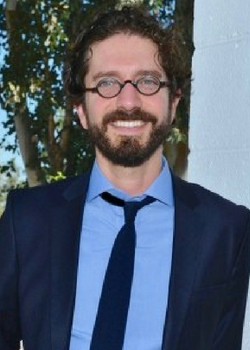The Passover Seder is a moment of profound transition, when we move from being Avadim (slaves) to Benei Chorin (liberated people). Such transitions are not to be taken lightly. They require immense preparation - of body, mind, and spirit - if one wishes for them to go smoothly.
This Shabbat is Shabbat HaGadol, during which we traditionally discuss the various steps we must take to prepare for Passover. We will also be reading Parshat Tzav, in which we see the preparations for another type of profound transition, that of Aharon and his sons into their new identities as Kohanim (priests).
The first step Aharon and his sons take in this process is to put on simple, white robes (though Aharon does wear additional, ornate garments on top). These robes represent a state of purity and openness - an essential prerequisite for the remaining preparations. By donning such symbolic attire, the Kohanim show themselves that they are indeed blank slates capable of taking on a new identity.
Next, Aharon sacrifices a bull as a sin offering, which is wholly burned and not consumed by anyone. While Rashi says this animal is offered as atonement for the Golden Calf - as they are the same animal - I prefer to see this act as atonement not only for this grave sin, but for any and all transgressions Aharon and his sons may have committed up to this point. The purpose therefore being to right their relationship with God and provide them with a spiritual state as pure as their garments.
The third step Aharon takes is to sacrifice a ram, which is also wholly burned and not consumed by anyone. By taking something of value and offering it fully to God, the priests here release all claims of ownership and acknowledge that everything belongs to God - that we are simply temporary custodians of the items in our possession. By taking this step, the Kohanim perform Bittul Nefesh (self-nullification), as there is no room for ego when entering into relationship with God.
Finally, after all three preliminary steps are fulfilled; Aharon offers one last sacrifice, the ram of Milu’im or fulfillment. Part of this sacrifice was burned on the altar for God, some was set aside for Moshe, and the rest was given to Aharon and his sons to eat. It is through this simple act of sharing a meal with God from a common sacrifice that the Spirit of God is able to enter and fill (malei) the Kohanim.
By fulfilling every step in this process of preparation, Aharon and his sons are able to transition successfully into their new identities - spiritual leaders to the Israelite community.
And so it is with Shabbat HaGadol. As the final Shabbat prior to the start of Passover, this is our last chance to prepare ourselves for the profound liberation that awaits us during the holiday. Each of us lives in our own Mitzrayim (Egypt, or straits), whether it be related to work, relationships, or personal matters. If we wish to be liberated from such straits and to pass over to the other side, then we must take the necessary steps to prepare ourselves before we enter into a moment of such profound transition. First, we must see ourselves as capable of taking on a new identity. Next, we must right any outstanding matters, so that we can proceed with a clear conscience. Finally, we must check our egos at the door, so we can enter into liberation with purity of intent. Only once we take such steps, will we be able to transition successfully into our new identity as Benei Chorin.

